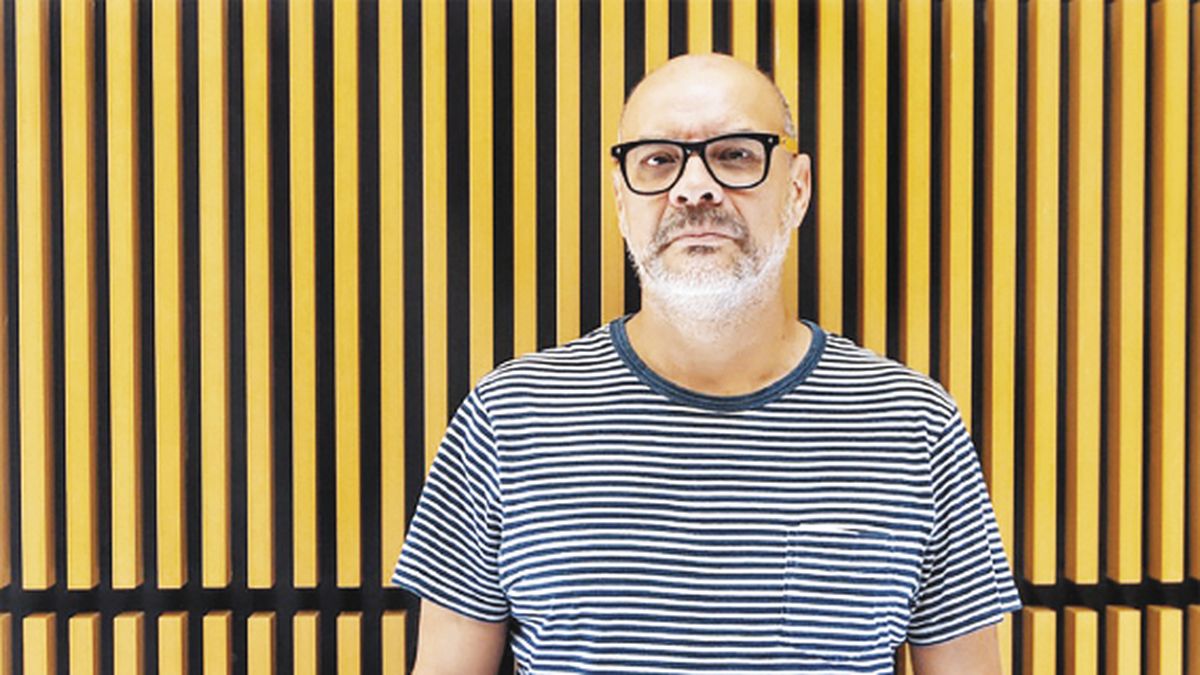Starting from a moment of the Conquest of the Desert in his novel “The Hot Patch” (Emecé), Fabián Casas develops a motley, tense, violent, mutant story, where realism and the fantastic mix in a dazzling way. Casas, with an extensive narrative, theatrical and essayistic work, has dedicated himself to scripting films for a few years. We dialogue with him.
Journalist: What led you to deploy in “The Hot Patch” the story that was the plot of the film “Jauja” that takes place in the Conquest of the Desert?
Fabián Casas: The film was the basis. When I wrote “Jauja” I still didn’t know how to write scripts and, to make the script, write a story. Later, with Lisandro Alonso, the director, we turned it into a script for the film that competed in 2014 at Cannes and won the Fipresci award. As I became hooked on the characters, over the next eight years I continued writing their stories. I didn’t write much, because it is a fairly dense story. I put the novel down a bunch of times, but I always came back. There were facts that Lisandro could not use in the film, like when the dog becomes a man, because with that “Jauja” became a Cronenberg film; and now it’s in the novel.
Q.: Against an alternative historical background, the novel recounts fantastic, magical events, metamorphoses. Did that lead you to change the name of the characters in the film?
CF: Since Viggo Mortensen knows how to speak Old Danish, we made the protagonist in the film be of that origin; the initial one was English. In the novel he became English again, I wanted to get away from the film and return to the initial ideas. A central idea arose from a problem of a friend’s daughter. It turns out that Gustavo López, who is an editor from Bahía Blanca, had a dog and took him to serve some dogs and he got lost, and her daughter went into depression because she missed the dog. One night I dreamed that the dog came back as a man and married my friend’s daughter. The script started from that short story. Since that story is not in the movie, it gave impetus to the novel.
Q: Is this how you added fantastic, magical events and metamorphosis to the historical?
CF: My previous books take place within realistic literature, although in the previous book there is a character who ends up on Mars. In this novel I mixed lots of genres, and I tried not to become a slave to any of them. While I was writing it, I included some things that happened to me in the novel. A friend gave me a book by Castaneda, and now a Castaneda passes through the novel. A friend called El Coronel was having fat problems, now she is in the novel turned into a language. The novel was like a secret diary for me.
Q.: From time to time there are nods to lots of authors, from Borges of “History of the Warrior and the Captive” to “The Man in the Castle” by Philip K. Dick.
CF: The final story, the chapter “The Hot Patch,” is a rewriting of “The Portuguese Woman” by Robert Musil, and his story of the Von Kettens. I don’t care about originality, I like to play with everything, and steal from everyone, I feel good there.
Q: How did the hot patch symbol appear to you?
CF: I really like dogs. I had a dog, Rita, a border collie, who I loved very much, and my dog Rita had hot patches. It is something that appears on dogs’ backs, a rectangular hole with pus and blood. When I took her to be treated I found out that this appears in dogs when they miss their owner. When she was writing she was very aware of those hot patches that dogs get and that shows how powerful the bond between the dog and the human is. Storytellers learn to narrate at night when they join the atavistic tribe of humans. A tribe that is just beginning to be able to sleep when they tame the golden jackal, which then warns them when there is danger, when other tribes or enemies are coming. Once you had that dog that warned you, you could sleep. We, as an atavistic remnant, were left with insomnia, that moment when stories are told. That makes the union between the dog and us, being able to sleep, the atavistic fear of not being able to sleep and telling stories to be able to sleep, and to live.
Q: Did that give you that ending to the story that makes the novel become circular?
CF: Fanta, the girl from the castle, who is already grown up, asks Zimmer, who is now the man of the castle, to tell her a bedtime story, and he starts writing it, and then you realize that what you read started from there. .
Q.: For example, that Colonel Zuluaga who gets lost in the desert, is searched by his dog, who transforms trying to find him, and the groups that go out to find him and create legends about him…
CF: That he joined the “coconut head” tribe, that he steals the captives’ clothes, that he rides dressed as a woman, that he must be saved. I tried to break with the idea of finding the mythical character. Conrad in “Heart of Darkness” makes it so that when they go to look for Kurtz they find him. I liked that this search was a tension in the story but that it did not lead to finding it. Bolaño in “The Savage Detectives” makes the protagonists go out to look for Cesárea Tinajero and find him, that is an anticlimax. I like that Zuluaga gets lost, I know that he doesn’t know if they will find him at some point.
Q: Were you writing anything while working on “The Hot Patch”?
CF: Mainly scripts. For Luis Ortega with him and Rufo Palacios, “Matar al jockey”, which is released now. With Lisandro Alonso “Eureka” that premiered in Cannes. With Victoria Gagliardi “The Hedgehogs”, which is in production. I wrote movies; I didn’t write novels again.
Source: Ambito
I am an author and journalist who has worked in the entertainment industry for over a decade. I currently work as a news editor at a major news website, and my focus is on covering the latest trends in entertainment. I also write occasional pieces for other outlets, and have authored two books about the entertainment industry.




